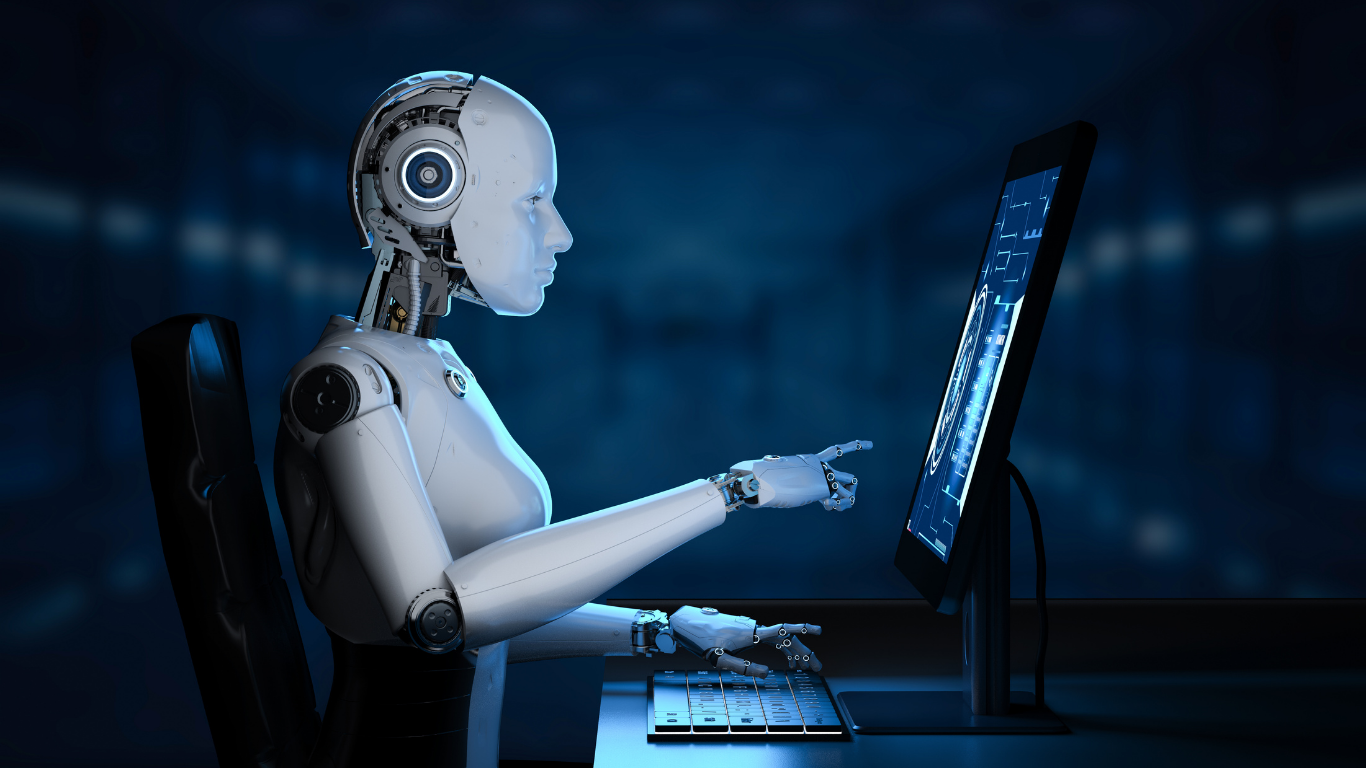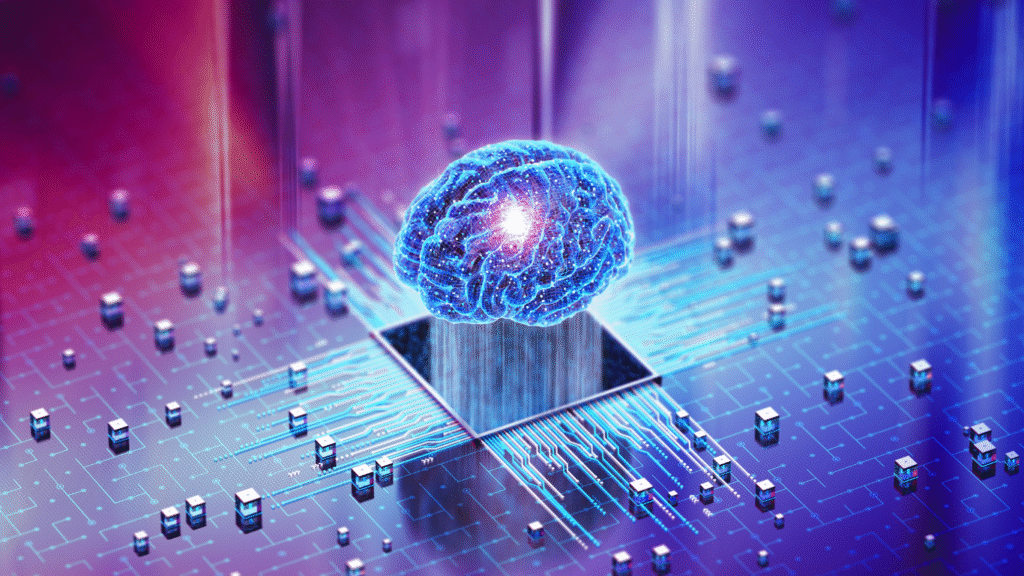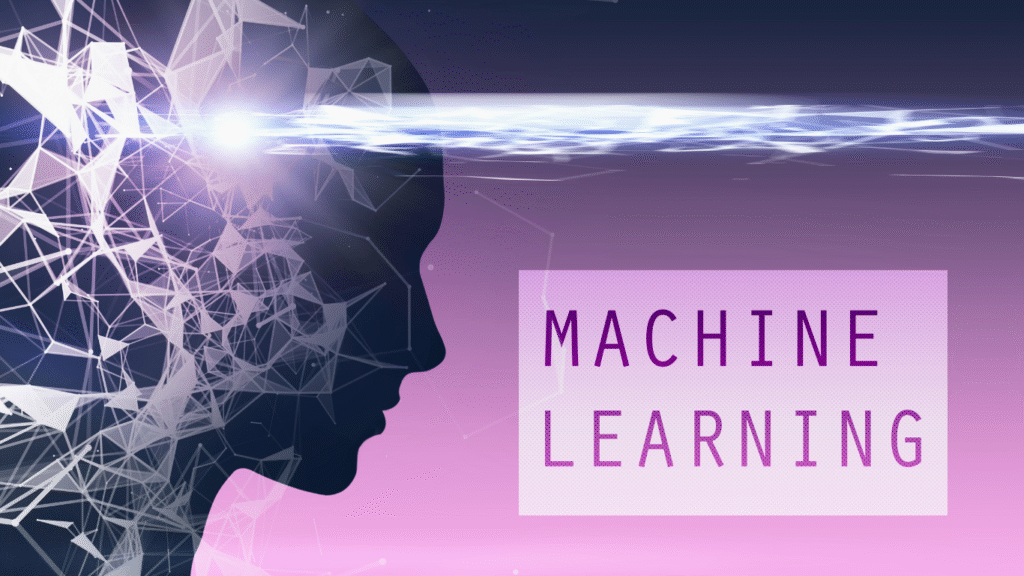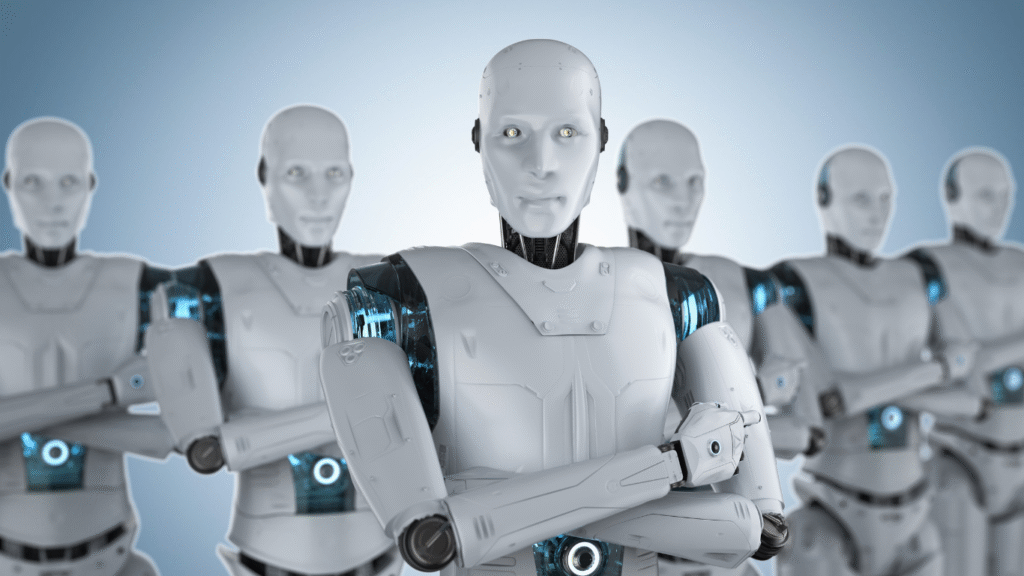
Powered by Pinaki IT Hub – Building the Next Generation of Tech Leaders
Technology has always been the cornerstone of innovation, but in 2025, Artificial Intelligence (AI) and Machine Learning (ML) have become game-changers for IT giants across the globe.
From predictive analytics to autonomous systems, AI & ML are driving efficiency, creativity, and competitive advantage. But this transformation also requires deep understanding of algorithms, market trends, and future career opportunities.
In this blog, we’ll explore:
- What AI & ML really mean for IT giants in 2025
- Core algorithms driving innovation
- How top companies are applying them in real-world scenarios
- The market impact and revenue potential
- Career opportunities for AI & ML professionals
By the end, you’ll know how these technologies are shaping the IT landscape – and how you can be part of it.
1. What Are AI & ML? A Deep Dive

Artificial Intelligence (AI)
Artificial Intelligence (AI) refers to the development of computer systems or machines that can perform tasks that typically require human intelligence. These tasks include learning from data (machine learning), reasoning, problem-solving, understanding natural language, recognizing patterns, and making decisions.
AI works by using algorithms and models to process large amounts of data, identify trends, and improve performance over time. It aims to replicate or simulate cognitive functions such as perception, reasoning, learning, and self-correction.
Key Components of AI
- Machine Learning (ML):
Enables machines to learn from data and improve performance without explicit programming. - Natural Language Processing (NLP):
Allows machines to understand, interpret, and respond to human language. - Computer Vision:
Enables machines to analyze and interpret visual information from the world (e.g., images, videos). - Expert Systems:
Mimic human decision-making by using rules and knowledge bases. - Robotics:
Integrates AI to allow machines to perform physical tasks autonomously.
Applications of AI
- Healthcare: Early diagnosis, drug discovery, robotic surgery.
- Business & Finance: Fraud detection, chatbots, predictive analytics.
- Transportation: Self-driving cars, traffic management.
- Daily Life: Voice assistants like Alexa, Siri, and Google Assistant.
Machine Learning (ML):

Machine Learning is a core subfield of Artificial Intelligence (AI) that allows machines to analyze data, identify patterns, and make informed decisions with minimal human intervention. Instead of relying solely on explicitly programmed instructions, ML systems learn and adapt through exposure to large amounts of information, refining their performance as they process more data.
At its foundation, ML uses mathematical models and statistical algorithms to extract insights from raw data. These insights enable machines to perform tasks such as recognizing images, understanding speech, predicting future trends, and even diagnosing diseases—tasks that traditionally required human intelligence.
Key Features of ML:
- Data-Driven Learning: ML systems rely on historical and real-time data to learn relationships and improve outcomes.
- Pattern Recognition: ML algorithms can identify hidden patterns and correlations in vast datasets.
- Self-Improvement: Performance enhances over time as the model processes more data and corrects errors.
Types of Machine Learning:
- Supervised Learning
Machines learn from labeled datasets, where both input and output are known. Example: Predicting house prices based on features like size, location, and amenities. - Unsupervised Learning
Machines explore unlabeled data to find hidden structures, groupings, or anomalies. Example: Customer segmentation in marketing. - Reinforcement Learning
Machines learn through trial and error, receiving rewards or penalties for actions taken, much like how humans learn from experience. Example: Training robots to walk or AI to play complex games like chess or Go.
Why ML Matters:

Machine Learning powers many aspects of modern life—recommendation engines on Netflix and Amazon, fraud detection in banking, voice assistants like Alexa and Siri, and even medical imaging analysis. Its potential continues to expand as computing power and data availability grow, pushing the boundaries of what machines can achieve.
Key Components of AI & ML in 2025
- Generative AI
Generative AI has matured into ultra-advanced systems capable of producing human-like text, hyper-realistic images, dynamic videos, and even executable code. In 2025, it fuels content creation, personalized marketing, product design, and immersive entertainment, enabling businesses to achieve scalable creativity without compromising on quality or originality.
- Natural Language Processing (NLP)
NLP bridges the gap between human language and machine understanding. By 2025, NLP models excel at context-aware conversation, real-time language translation, sentiment detection, and advanced information retrieval, making AI systems more intuitive, empathetic, and capable of human-like interactions.
- Deep Learning
Deep learning employs multi-layered neural networks that replicate the human brain’s processing capabilities. These networks excel in speech recognition, natural language understanding, medical imaging, predictive analytics, and autonomous systems, achieving near-human levels of precision in complex decision-making.
- Reinforcement Learning (RL)
Reinforcement Learning thrives on a reward-driven learning mechanism, where algorithms learn through trial-and-error interactions with their environment. In 2025, RL powers robotics, autonomous vehicles, industrial automation, and game theory, enabling systems to make real-time adaptive decisions with minimal human oversight.
- MLOps (Machine Learning Operations)
MLOps ensures seamless deployment, monitoring, and scaling of ML models in production. It integrates DevOps practices with ML lifecycle management, automating training, version control, performance tracking, and updates. By 2025, MLOps is a core enabler of efficient, reliable, and compliant AI-driven enterprises.
2. Algorithms Powering AI & ML in IT

In 2025, AI and ML innovations are driven by advanced algorithms that empower IT systems to analyze vast datasets, predict outcomes, automate decision-making, and continuously optimize performance. These algorithms are categorized based on their learning approaches and application areas:
Supervised Learning Algorithms
Supervised learning uses labeled datasets, where machines learn from input-output pairs to make predictions or classifications.
- Linear Regression
A foundational algorithm used to model the relationship between independent and dependent variables. In IT, it is used for performance trend analysis, cost forecasting, and predicting system loads. - Random Forest
A robust ensemble method that combines multiple decision trees to improve prediction accuracy and reduce overfitting. IT teams apply it to anomaly detection, system health monitoring, and cybersecurity threat prediction. - Gradient Boosted Trees (GBT)
An advanced boosting technique that builds sequential decision trees, each correcting the errors of the previous ones. It is used for high-stakes tasks like fraud detection, software quality assurance, and predictive maintenance of IT infrastructure.
Unsupervised Learning Algorithms
Unsupervised learning identifies patterns, clusters, and structures within unlabeled datasets, enabling systems to discover hidden insights.
- K-Means Clustering
Groups data points into clusters based on similarities. IT applications include customer segmentation for service delivery and grouping system logs for anomaly detection. - Principal Component Analysis (PCA)
A dimensionality reduction technique used to simplify large datasets while preserving key patterns. It helps IT teams visualize complex performance metrics, detect abnormal behaviors, and improve storage efficiency.
Deep Learning Architectures
Deep learning algorithms mimic the human brain through artificial neural networks, powering advanced AI applications.
- Convolutional Neural Networks (CNNs)
Primarily used for image recognition and computer vision. In IT, CNNs are applied to identify hardware defects through imaging, monitor server rooms, and enable visual authentication systems. - Transformers (BERT, GPT)
State-of-the-art models for natural language processing (NLP). IT giants use them for chatbots, intelligent coding assistants, automated technical support, and real-time system documentation generation.
Reinforcement Learning Models
Reinforcement learning trains models through trial and error, rewarding correct actions to optimize performance over time.
- Q-Learning
A value-based algorithm that learns the best actions to take in a given state. IT teams use it in dynamic resource allocation, such as optimizing cloud workloads. - Policy Gradient Methods
Focus on directly optimizing policies that guide system actions. These are crucial for autonomous systems in IT, like self-healing networks and adaptive cybersecurity frameworks.
Why These Algorithms Matter in IT

These algorithms are the backbone of next-generation IT solutions, driving systems from basic automation toward true intelligence.
- Predictive Intelligence – Machine learning models such as Gradient Boosted Trees and Random Forests can analyze historical data to forecast system failures, detect anomalies, and predict workload demands—helping IT teams stay ahead of issues before they arise.
- Adaptive Learning – Deep learning architectures like CNNs and Transformers allow IT systems to adapt and improve continuously, learning from vast datasets to refine performance in applications like security threat detection, chatbot interactions, and workflow optimization.
- Real-Time Optimization – Reinforcement learning models, including Q-Learning and Policy Gradient methods, optimize processes in real time, making split-second decisions in areas like network traffic management, cloud resource allocation, and autonomous IT operations (AIOps).
By integrating these algorithms, IT is no longer just a support function—it becomes a strategic intelligence layer, capable of learning, adapting, and evolving with business needs in 2025 and beyond.
3. Real-World Applications by IT Giants

- Search Algorithm Optimization:
Google continuously refines its search algorithms using advanced AI models like Transformers (e.g., BERT) to improve relevance, context understanding, and accuracy of search results. - Google Cloud AI APIs:
Enterprises leverage Google’s pre-trained ML models through Cloud AI APIs for image recognition, speech-to-text conversion, and natural language understanding, enabling rapid integration of AI into business operations.
Microsoft
- Azure AI & Predictive Analytics:
Microsoft Azure provides a robust AI platform for enterprises to build predictive analytics models, helping businesses forecast trends, detect anomalies, and make data-driven decisions. - Generative AI in Office Suite:
Tools like Copilot in Word, Excel, and PowerPoint use generative AI to automate tasks, create content, and provide intelligent recommendations, enhancing productivity at scale.
Amazon
- AI-Driven Personalization:
Amazon uses AI algorithms to deliver hyper-personalized product recommendations, optimize pricing, and improve user experience across its e-commerce ecosystem. - AWS SageMaker:
SageMaker allows enterprises to build, train, and deploy machine learning models quickly, making ML adoption seamless across industries like healthcare, finance, and logistics.
IBM
- AI-Powered Cybersecurity:
IBM’s Watson AI platform identifies potential security threats by analyzing massive data streams, enabling proactive risk detection and threat mitigation. - Predictive Maintenance for Enterprises:
AI models predict equipment failures and optimize maintenance schedules for manufacturing, energy, and industrial sectors, reducing downtime and operational costs.
4. Market Impact & Growth

The global AI market is projected to reach $407 billion by 2027 (PwC, 2025), driven by the rapid adoption of machine learning and deep learning technologies across industries.
- Cost Efficiency: ML-driven automation is helping Fortune 500 companies save an average of $1.3 billion annually in operational expenses by streamlining processes, reducing manual errors, and improving decision-making speed.
- Healthcare: AI assists in predictive diagnostics, as seen in Google Health’s AI models that can detect diseases like diabetic retinopathy earlier than human specialists.
- Finance: JPMorgan Chase uses AI for fraud detection, real-time risk analysis, and improving customer experience through intelligent chatbots.
- Retail: Amazon leverages AI for hyper-personalized recommendations, dynamic pricing, and inventory forecasting, directly boosting sales and customer loyalty.
- Cybersecurity: IBM Watson applies AI to detect anomalies, predict potential breaches, and improve incident response times for large enterprises.
- Cloud Computing: Microsoft Azure AI offers ready-to-deploy ML models for enterprises, accelerating innovation and reducing development costs.
5. Career Opportunities in AI & ML – A Growing Frontier

The career landscape in Artificial Intelligence (AI) and Machine Learning (ML) is expanding rapidly, with organizations across industries integrating intelligent technologies into their operations. According to LinkedIn’s Future of Jobs Report (2025), AI & ML roles are growing at an impressive 40% Year-over-Year (YoY), making them some of the most sought-after and high-paying professions globally.
Key Roles and What They Do
1. AI/ML Engineer
- Role: Designs, builds, and implements machine learning models to solve real-world business problems.
- Example: Developing an AI model for self-driving cars (Tesla, Waymo) or recommendation engines (Netflix, Amazon).
- Skills Required: Python, TensorFlow, PyTorch, algorithm design, data structures.
2. Data Scientist (ML Specialist)
- Role: Analyzes large datasets, builds predictive models, and provides data-driven insights.
- Example: Predicting customer churn in telecom or credit risk scoring in banks.
- Skills Required: Statistics, SQL, ML algorithms, visualization tools like Power BI or Tableau.
3. MLOps Engineer
- Role: Manages deployment, monitoring, and scalability of ML models in production environments.
- Example: Ensuring fraud detection models run in real-time for payment gateways like PayPal or Stripe.
- Skills Required: Kubernetes, Docker, CI/CD pipelines, cloud platforms (AWS, Azure, GCP).
4. AI Ethics & Governance Officer
- Role: Ensures AI models are fair, unbiased, and compliant with legal regulations.
- Example: Preventing AI-driven hiring platforms from discriminating against candidates based on gender or ethnicity.
- Skills Required: Knowledge of AI ethics, policy frameworks, data privacy regulations.
5. Computer Vision Engineer
- Role: Develops algorithms that help computers interpret and analyze visual data.
- Example: Powering facial recognition systems (Apple Face ID) or autonomous quality checks in manufacturing.
- Skills Required: OpenCV, CNNs, Deep Learning frameworks, image processing.
6. NLP Specialist
- Role: Works on enabling machines to understand, interpret, and respond to human language.
- Example: Building chatbots (ChatGPT, Alexa) or language translation apps (Google Translate).
- Skills Required: NLP libraries (SpaCy, NLTK), Transformers, Deep Learning.
Salary Insights
- India: ₹12 – ₹35 LPA (can go up to ₹50 LPA for senior roles in top firms).
- Global: $120,000 – $200,000 per year (with roles in Silicon Valley, London, and Singapore offering higher compensation).
Industries Hiring AI & ML Experts
- Healthcare: AI for medical imaging, drug discovery, and personalized treatment.
- Finance: Fraud detection, algorithmic trading, and credit scoring.
- Retail & E-commerce: Personalized recommendations and demand forecasting.
- Cybersecurity: Real-time threat detection and predictive risk analysis.
- Cloud Computing: AI-enabled infrastructure automation (AWS, Azure, GCP).
6. Why Choose Pinaki IT Consultant to Learn AI & ML?

Learning Artificial Intelligence and Machine Learning is not just about theory – it’s about gaining practical skills that make you industry-ready. Pinaki IT Consultant bridges the gap between learning and real-world application with a holistic approach to training.
1. Hands-On Learning with Real-World Projects
Instead of just learning concepts, you’ll work on live AI & ML projects – from building predictive models to deploying AI solutions across industries like healthcare, finance, and e-commerce. This ensures you graduate with a strong portfolio that showcases your skills.
2. Mentorship from Industry Veterans
Our mentors come with 15+ years of experience in AI, ML, and Data Science. They provide personalized guidance, helping you understand practical use cases, optimize your projects, and gain insights into the latest industry trends.
3. Global Certifications for Career Boost
We prepare you for top-tier certifications like AWS AI, Azure ML, TensorFlow, and PyTorch, recognized by leading tech companies worldwide. These certifications validate your expertise and make you stand out in a competitive job market.
4. 97% Placement Success Rate
With a dedicated placement support program, we help you secure roles in top MNCs and global firms. Our industry connections, mock interviews, and resume-building sessions give you a significant advantage in landing high-paying roles.
AI & ML are no longer future concepts – they are present-day growth drivers for IT giants worldwide. Businesses are investing heavily, and professionals with these skills are leading the charge.
Ready to join the AI revolution?
Start your journey with Pinaki IT Consultant today. Build hands-on expertise, earn global certifications, and unlock a future-proof career.



